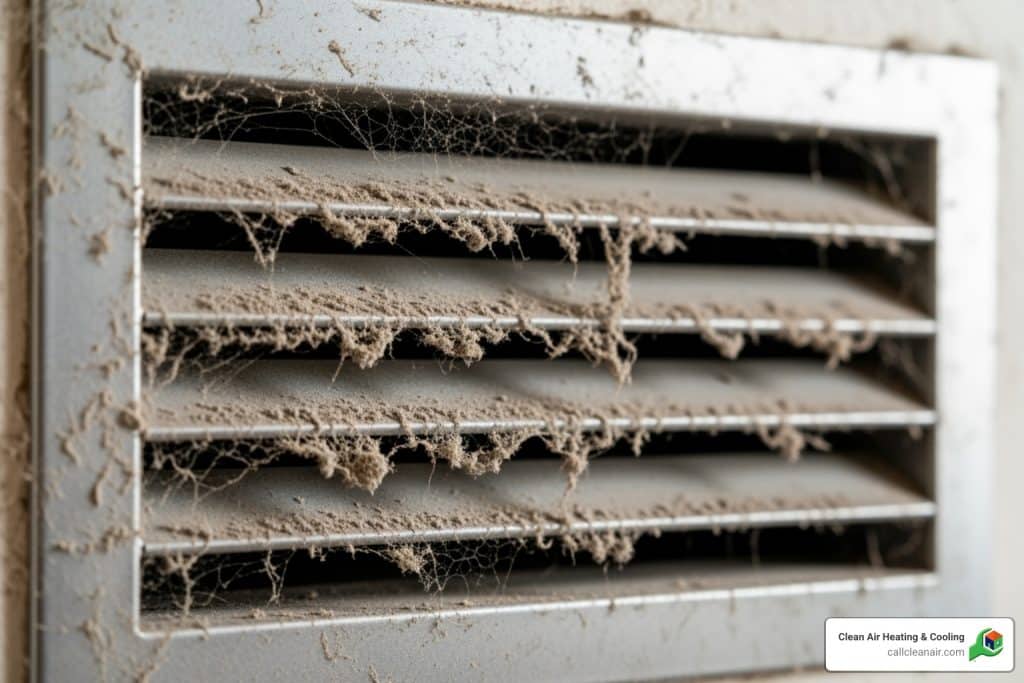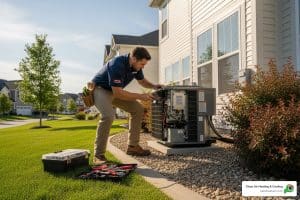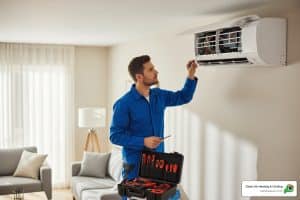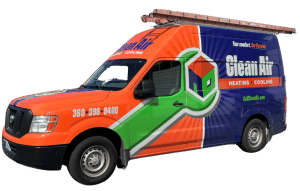Why Homeowners Are Questioning Duct Cleaning Value
Is duct cleaning worth it – this question divides homeowners, HVAC professionals, and even health experts. Some swear by regular cleanings for better air quality and system efficiency. Others call it an unnecessary expense.
Quick Answer: Is Duct Cleaning Worth It?
- Generally not necessary for routine home maintenance
- May be beneficial when there’s visible mold, pest infestation, or excessive debris
- Limited scientific evidence supporting health or efficiency benefits
- Worth considering after major renovations or for severe allergy sufferers
- Focus instead on regular filter changes and HVAC maintenance
The confusion is understandable, with conflicting information from EPA reports and marketing flyers promising cleaner air and lower energy bills.
As a homeowner in Northwest Washington, you face unique challenges like our damp, mold-encouraging climate and dust from ongoing development. With rising energy costs, any promise of efficiency is appealing.
But here’s the reality: the answer isn’t the same for every home. Your specific situation—from the age of your ductwork to your family’s health needs—determines whether duct cleaning makes financial sense.
This guide cuts through the marketing claims and conflicting advice. We’ll examine what the EPA actually says, when cleaning might help, and how to avoid industry scams.
I’m Colin Matei, Owner of Clean Air Heating & Cooling. I’ve helped thousands of Bellingham families steer the question of is duct cleaning worth it based on their home’s conditions. My goal is to give you the facts to make the right choice for your family and budget.
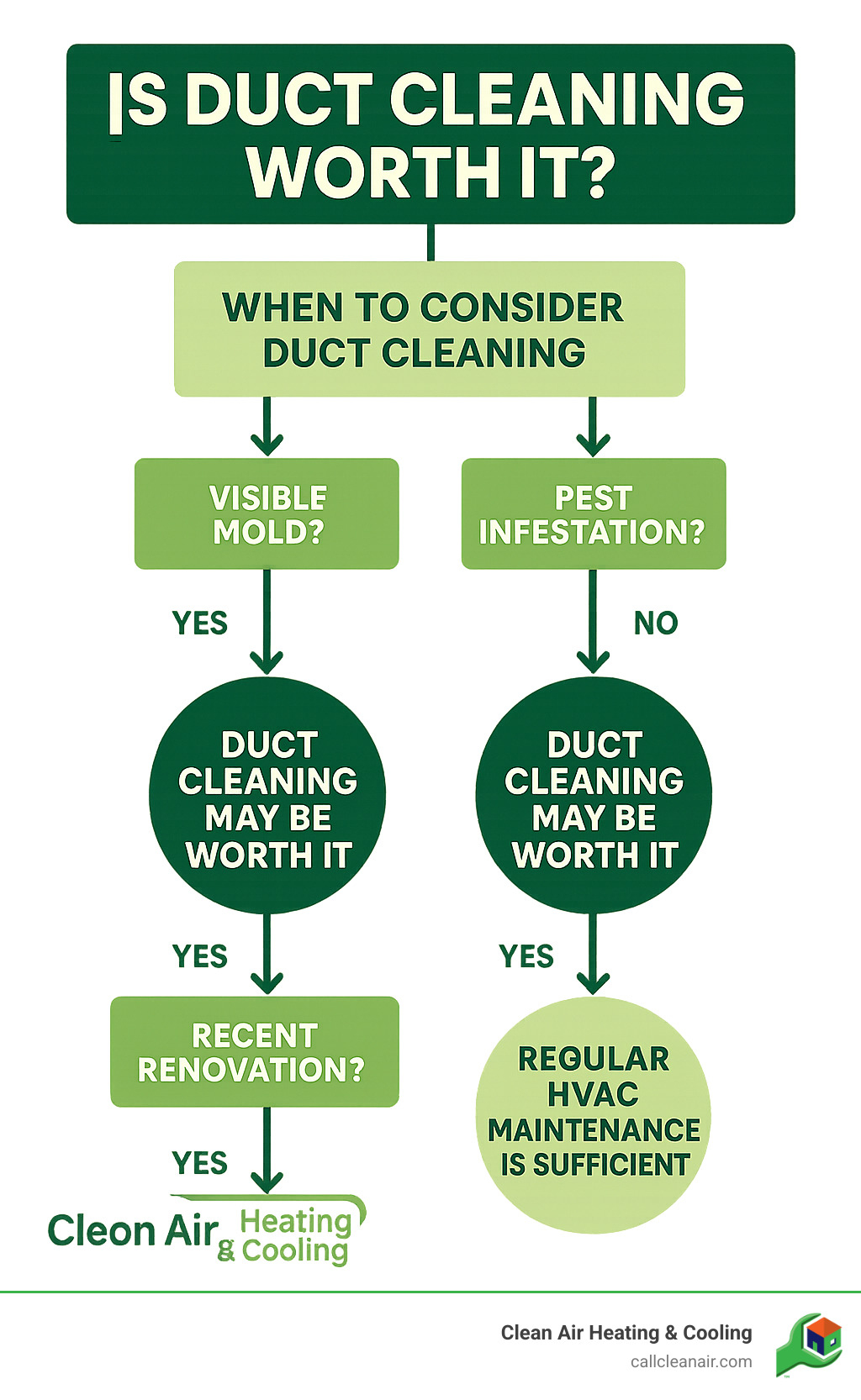
What is Air Duct Cleaning and What Does It Involve?
To decide if duct cleaning is worth it, you need to understand what you’re paying for. It’s not just vacuuming vents; it’s a comprehensive process targeting your entire HVAC system’s air circulation network.
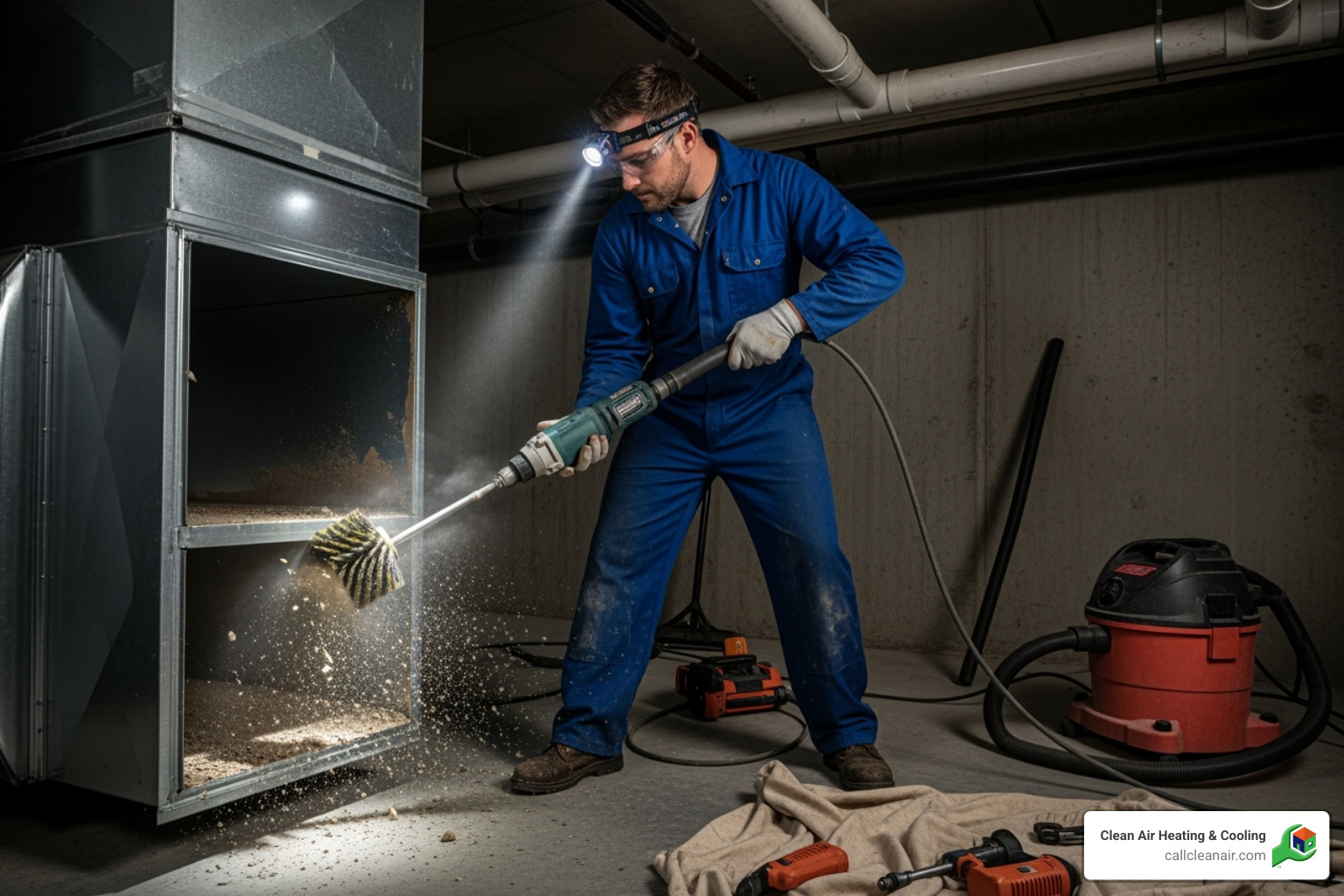
Think of your ductwork as your home’s respiratory system. Professional duct cleaning uses source removal cleaning—the gold standard method that physically removes contaminants instead of just stirring them around.
The process starts with powerful vacuum equipment (often truck-mounted) creating negative pressure throughout your duct system. While that’s running, technicians use specialized tools like rotary brushes and compressed air whips to dislodge stubborn debris from duct surfaces.
Many homeowners don’t realize a thorough cleaning includes more than just the supply and return air ducts. Those main pathways are just part of the story.
The cleaning also includes your registers and grilles, diffusers, and even components you never see like heat exchangers.
In our Pacific Northwest climate, your cooling coils and condensate drain pans are particularly important. These areas collect moisture, which can lead to mold in Bellingham’s humid conditions if not maintained. The fan motor and housing and the air handling unit housing are also cleaned.
The goal is removing everything that doesn’t belong: dust, dirt, pollen, pet dander, mold spores, and sometimes even pest debris or construction dust from development around Whatcom County.
A reputable service will use HEPA filtration to ensure contaminants are captured, not just relocated. They’ll also protect your home with drop cloths and seal access holes properly when they’re finished.
For homeowners curious about the potential advantages this thorough process might bring, The Benefits of Duct Cleaning provides detailed insights into what you might expect from professional service.
The Official Stance: What the EPA and Industry Experts Say
When wondering is duct cleaning worth it, it’s smart to check what the experts say. Let’s cut through the marketing hype to see what the EPA and industry professionals think.
EPA Position: A Cautious Approach
Here’s what might surprise you: the EPA doesn’t recommend routine duct cleaning for most homes. According to the U.S. Environmental Protection Agency, duct cleaning has not been proven to prevent health problems or significantly improve indoor air quality in typical residential settings.
The reason is that most household dust settles on surfaces like furniture and floors, not in your ducts. Your ductwork isn’t the dust highway many imagine.
The EPA’s research shows that a light amount of household dust in air ducts poses no known health risk. There’s also little evidence that cleaning only the ducts will improve your HVAC system’s efficiency. Their official recommendation is straightforward: don’t clean your ducts routinely, but only when specific problems arise.
The EPA isn’t against duct cleaning, but recommends it be problem-focused rather than routine maintenance. You can dive deeper into their comprehensive guidance at The EPA’s guide on air duct cleaning.
NADCA Recommendations: When and How
While the EPA is cautious, the National Air Duct Cleaners Association (NADCA) provides the industry’s professional perspective. As the key certifying body, NADCA promotes best practices and sets standards for when cleaning makes sense.
NADCA suggests having your air ducts cleaned every 3-5 years as a general guideline. Importantly, NADCA agrees with the EPA that specific situations are more critical than arbitrary timelines. A home with pets, smokers, or recent renovations might need attention sooner.
The association emphasizes that professional cleaning should encompass your entire HVAC system, not just the visible ductwork. This means cleaning components like coils, drain pans, and the fan motor.
Interestingly, both NADCA and other industry organizations don’t recommend routine use of sealants to encapsulate contaminants in ducts, unless you’re dealing with specific repair issues.
Where Everyone Agrees
Here’s where the EPA, NADCA, and experienced HVAC professionals like us all agree: proper maintenance beats reactive cleaning every time. Regular filter changes and addressing moisture issues will do more for your air quality than periodic duct cleaning.
Both organizations stress that dust adhering to duct surfaces is normal and doesn’t automatically mean you need cleaning. The key is distinguishing between normal dust and actual problems.
For practical steps you can take right now, check out our guide on how to Improve Indoor Air Quality. You’ll find many effective solutions don’t involve duct cleaning.
The bottom line? The experts agree that is duct cleaning worth it depends entirely on your specific situation, not a calendar schedule.
So, Is Duct Cleaning Worth It? A Homeowner’s Decision Guide
So, after reviewing the official positions and industry standards, let’s get to the core question: is duct cleaning worth it for your home?
The honest answer is that it depends. Your home’s age, your family’s health, and what’s in your ducts all play a role. Let’s help you figure out where your home falls.
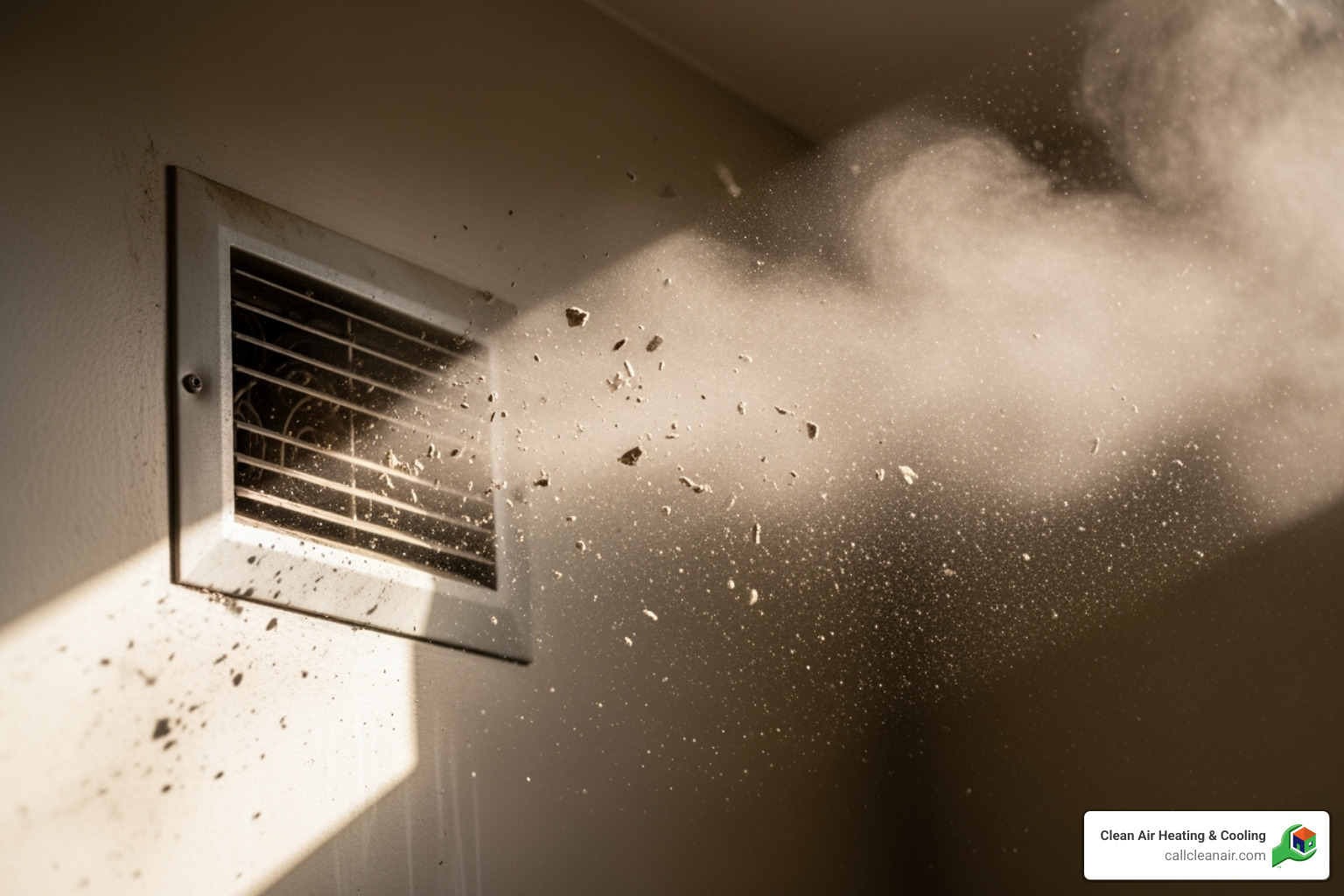
Is duct cleaning worth it for improving air quality and efficiency?
Let’s talk about what duct cleaning might do for your home. While the EPA is conservative, many homeowners notice real differences after a thorough cleaning.
Air quality improvements are a big reason people consider duct cleaning. The average house collects about 40 pounds of dust, dirt, and allergens annually. Some of this ends up in your ductwork, and when your system runs, it can circulate these contaminants throughout your home.
If someone in your family deals with allergies or asthma, removing built-up dust, pollen, and pet dander from your ducts might provide some relief. It’s not a miracle cure, but it can be one piece of creating a healthier indoor environment. Our Professional Air Quality Testing can give you the full picture.
Energy efficiency is where things get interesting. Significant dust and debris buildup can restrict airflow, forcing your furnace or air conditioner to work harder. Removing blockages allows your system to breathe easier, potentially saving you money on utility bills.
Don’t forget about odor removal. Persistent musty smells from your vents likely mean something is in your ductwork that shouldn’t be. Cleaning can eliminate odors from mold, mildew, or even deceased pests.
Is duct cleaning worth it if you have pets, allergies, or a recent renovation?
Now we’re getting into situations where is duct cleaning worth it becomes a much clearer “yes.”
Visible mold growth inside your ducts is a no-brainer. If you see mold on hard duct surfaces or other HVAC components, get it cleaned professionally. Moldy insulated ducts usually need replacement, not cleaning.
Pest problems are another clear indicator. Finding mice, rats, or insects in your ductwork means nests and droppings are circulating through your home’s air.
Recent major renovations create significant dust. Much of this construction debris ends up in your HVAC system, and without cleaning, you could be breathing it for years.
Pet owners face unique challenges. Pet dander accumulates in ductwork, and if anyone in your home has pet allergies, this buildup can worsen symptoms.
Unexplained respiratory symptoms in your family might point to duct issues. If you’ve ruled out other causes, contaminated ductwork could be a contributing factor.
For a deeper understanding of how your home’s air moves, check out A Homeowner’s Guide to Ductwork Ventilation.
How often should ducts be cleaned?
NADCA suggests cleaning every 3-5 years, while the EPA prefers an “only when needed” approach.
Your home’s cleaning schedule depends on your situation. Homes with multiple pets, family members with severe allergies or asthma, and homes with indoor smoking need more frequent attention. Recent water damage also bumps up the priority, as wet ducts are a mold risk.
Pay attention to what your home is telling you. If you see dust puffing from vents or if allergy symptoms worsen at home, it might be time for professional attention.
Regular Ventilation Duct Maintenance helps extend the time between cleanings.
Finding a Pro and Avoiding Scams: A Consumer Checklist
Now that we’ve explored when is duct cleaning worth it, let’s talk about finding a reputable provider. The industry has its share of scammers, but with the right knowledge, you can spot them.
I’ve seen too many families burned by operators who overpromise and underdeliver. The good news is that with the right knowledge, you can spot red flags and find a company that delivers value.
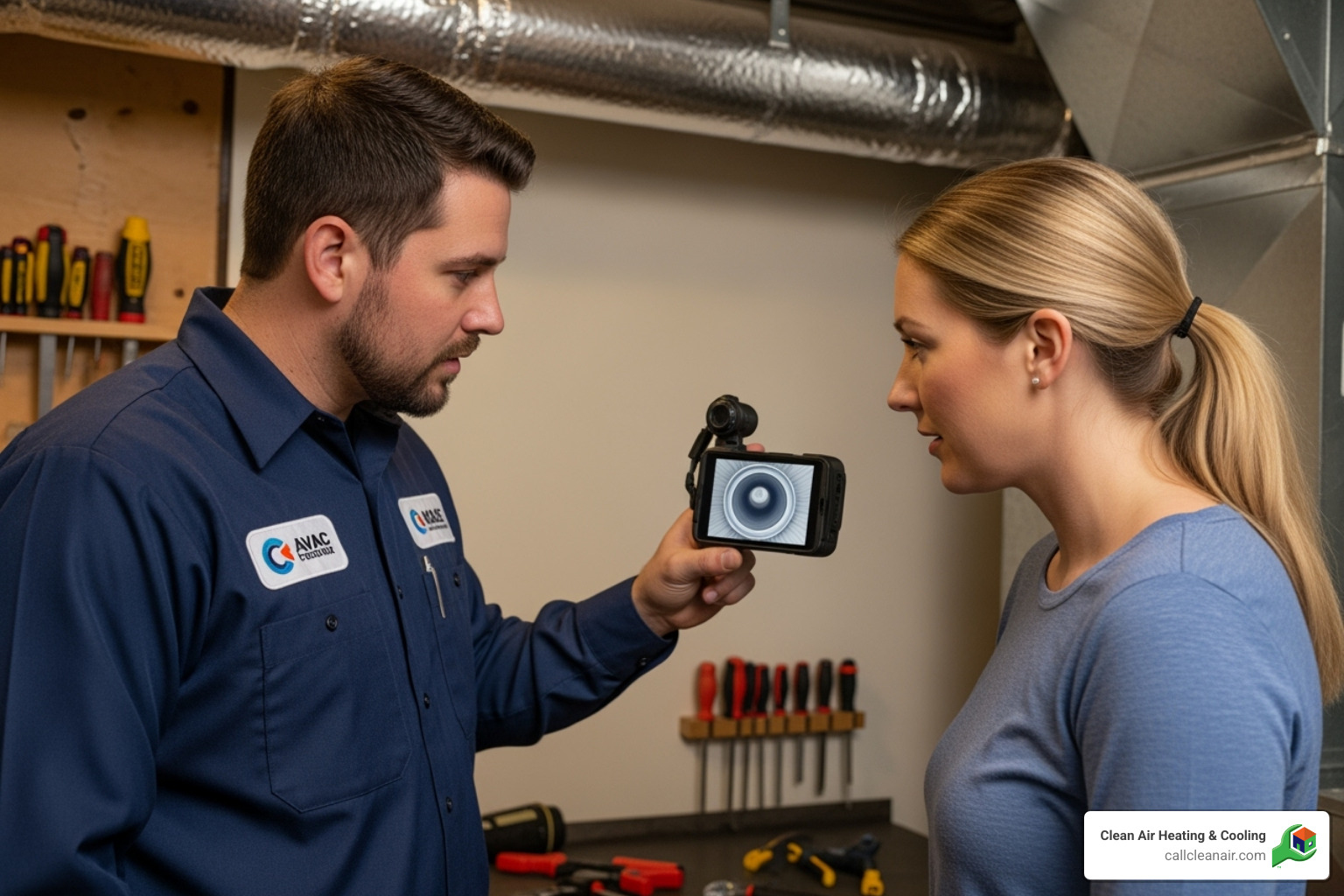
Red Flags: How to Spot a Duct Cleaning Scam
Here are the biggest red flags that signal a potential scam:
Those “too good to be true” low prices are a classic bait-and-switch tactic. Ads for whole-house cleaning at a low price get them in the door. Then, they suddenly “find” issues like “toxic black mold” that require expensive, immediate treatments.
High-pressure upsells are another dead giveaway. Legitimate companies educate, they don’t intimidate you into buying immediate chemical treatments, sealants, or UV lights.
Watch out for unsubstantiated health claims. Be skeptical of companies claiming they’ll cure your allergies or eliminate all respiratory problems. The EPA states that duct cleaning hasn’t been proven to prevent health problems.
Most reputable organizations, including the EPA and NADCA, don’t recommend routine use of chemical biocides or sealants. A company pushing these as standard procedure is a red flag.
How to Choose a Reputable Provider
Finding the right company is worth the homework. Start with NADCA certification—this means they follow industry standards. Look for technicians who are Air Systems Cleaning Specialists (ASCS).
Proof of license and insurance isn’t negotiable. Any legitimate company will gladly provide this. If they hesitate, keep looking.
A professional company provides detailed written estimates outlining the scope of work, methods, and cost. Vague estimates or pressure to sign are warning signs. Take time to compare quotes.
Positive local reviews and references are crucial. Check Google, Yelp, and the Better Business Bureau. Read reviews to understand customer experiences and ask for recent, callable references.
Proper professional equipment includes powerful vacuum systems that either exhaust particles outside or use HEPA filtration. They should have appropriate brushes and tools, not just a shop vacuum.
A thorough inspection before starting work shows professionalism. Good companies often use video cameras to assess contamination and show you what they’re dealing with.
For local expertise, HVAC Contractors Whatcom County understand the specific challenges of Pacific Northwest homes.
What to Expect from a Professional Service
When you hire the right company, the experience should be smooth and thorough.
It begins with a thorough system inspection, often using cameras to show you the inside of your ducts. This helps them identify problem areas and plan the cleaning.
Protection of your home and furnishings comes next. Reputable cleaners will cover furniture and floors and seal off registers to contain dust.
The cleaning involves powerful vacuum systems that create negative pressure. These industrial-strength units either exhaust contaminated air outside or use HEPA filtration.
While the vacuum runs, technicians use specialized agitation tools like rotary brushes or air whips to dislodge stubborn debris.
Cleaning all components means more than just the ducts. A proper service includes registers, grilles, the furnace fan, coils, and drip pans.
Any access holes created during cleaning should be properly sealed and re-insulated afterward.
Finally, expect a final walk-through where they show you the results, often with cameras, to verify the cleanliness of your ducts.
For a comprehensive understanding of what professional cleaning entails, explore our guide on HVAC Cleaning and Inspection.
The Best Alternative? The Power of Regular HVAC Maintenance
After years in the HVAC business, I’ve learned the best cure is often prevention. While we’ve explored when is duct cleaning worth it, an even better investment can be proactive HVAC maintenance that keeps ducts cleaner from the start.
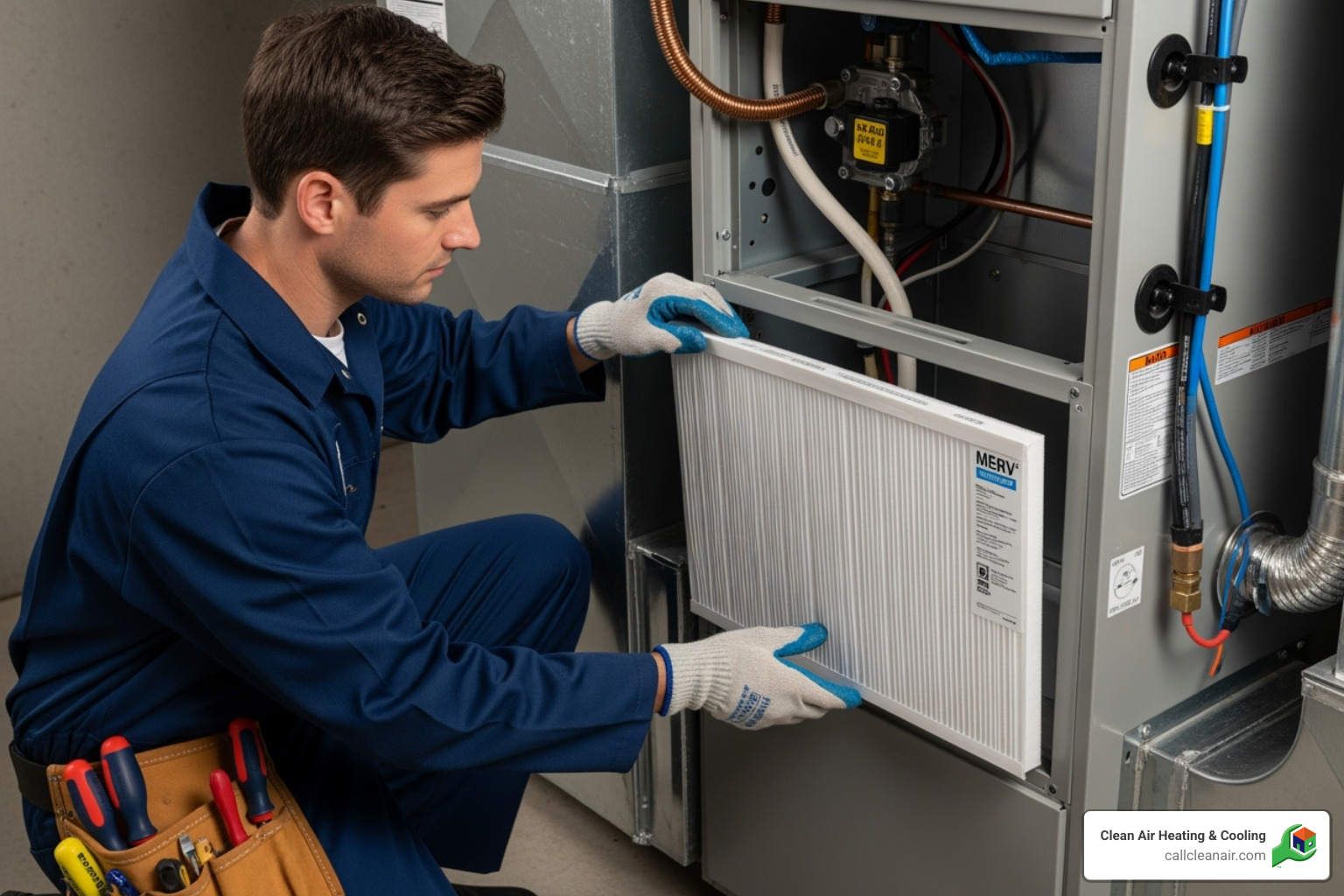
Your home collects about 40 pounds of dust, dirt, and allergens annually. Much of this settles on surfaces rather than in your ductwork. Smart maintenance stops most of that contamination before it ever gets there.
How Regular Maintenance Reduces the Need for Duct Cleaning
Caring for your HVAC system is like caring for your car; you wouldn’t wait for the engine to seize before an oil change. The same principle applies here.
High-efficiency air filters are your first line of defense. Using the highest efficiency filter your system can handle means fewer particles enter your ductwork.
Frequent filter changes are simple but often forgotten. We recommend changing filters every 1-3 months. If you have pets or allergies, change them more often. A dirty filter restricts airflow and lets more debris through.
An annual professional checkup catches problems early. During our HVAC System Checkup, we look for duct leaks that can pull in dusty air from your attic or crawl space. We also clean cooling coils and drain pans that can become mold breeding grounds.
Sealing duct leaks is particularly important in the Pacific Northwest. Leaky ducts waste energy and act like vacuums for dust and moisture in your walls and crawl spaces.
The Critical Role of Your Air Filter
Honestly, your air filter does more for air quality than any other single HVAC component. It’s the unsung hero most people ignore until their system stops working.
MERV ratings tell you how well a filter catches particles. Higher numbers mean better filtration, but your system must be able to pull air through it without straining.
Every day, your filter captures dust and allergens that would otherwise circulate through your home or settle in your ducts. A quality filter changed regularly can dramatically reduce buildup over time.
Beyond protecting your air quality, the filter also protects your HVAC system. Dust on your fan motor and coils reduces efficiency and can lead to costly repairs.
The investment in quality HVAC Air Filtration Systems and regular filter changes often costs less than a single duct cleaning service and works 24/7 to keep your air clean.
The bottom line? While duct cleaning has its place, consistent maintenance often eliminates the need for it. It’s the difference between being proactive and reactive.
Conclusion: Making the Right Call for Your Home
So, what’s the final answer to is duct cleaning worth it?
Here’s our straightforward take: Air duct cleaning isn’t a routine necessity for every homeowner. For most families with well-maintained systems and no obvious issues, the benefits may not justify the cost. EPA research shows most dust settles on home surfaces, not in your ductwork.
However—and this is an important distinction—duct cleaning is a valuable investment for specific, identifiable problems. If you see mold, find rodent droppings, or notice dust puffing from your vents, then cleaning makes perfect sense. The same goes for post-renovation cleanup or for homes with unexplained respiratory issues.
The key is addressing root causes, not just symptoms. Cleaning ducts without fixing an underlying moisture problem that caused mold is a temporary fix.
At Clean Air Heating & Cooling, our reputation is built on honest advice. We don’t sell services you don’t need—that’s how we’ve earned over 480 five-star Google reviews and maintain our 25% utility savings guarantee. Our approach is to evaluate your situation, explain your options, and let you decide what’s right for your family and budget.
Every home is different. A 1970s ranch with cats has different needs than a new construction with sealed ducts. Cookie-cutter recommendations don’t work.
If you’re still weighing whether your Northwest Washington home could benefit from duct cleaning, or if you want to discuss other ways to improve your indoor air quality, we’re here to help. Our team understands the unique challenges of our damp Pacific Northwest climate and can provide personalized recommendations.
Don’t let conflicting information confuse you. Contact us for an expert evaluation of your Bellingham home’s ductwork and get the straight answers you deserve. Together, we’ll help you breathe easier.

